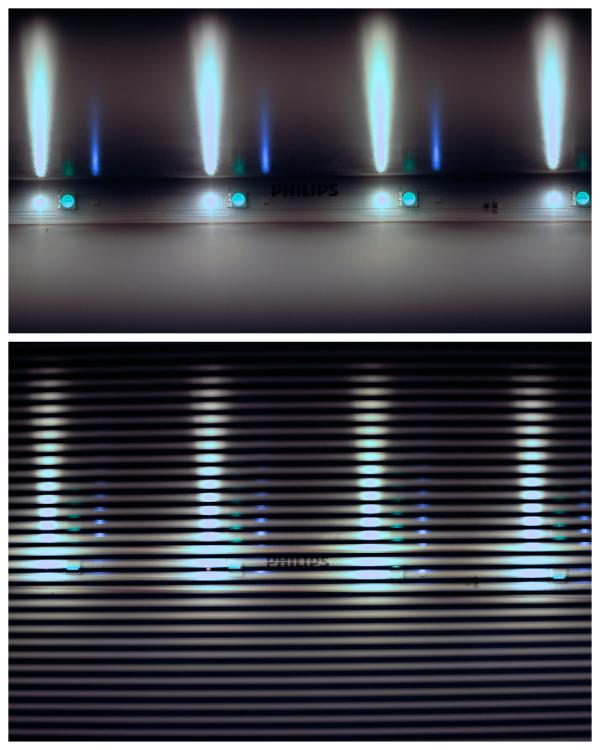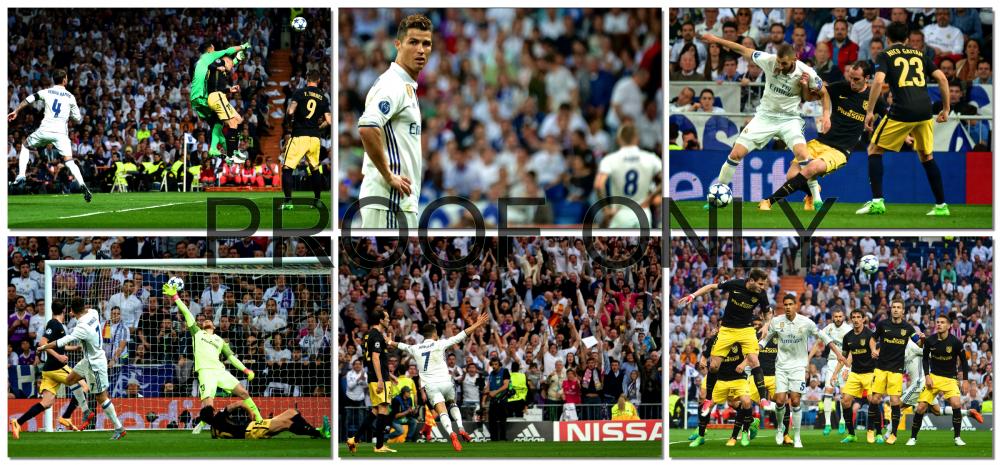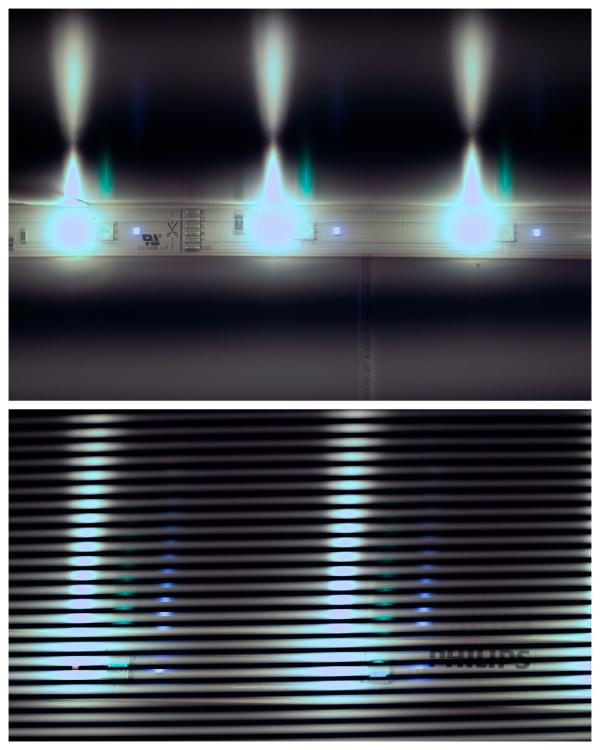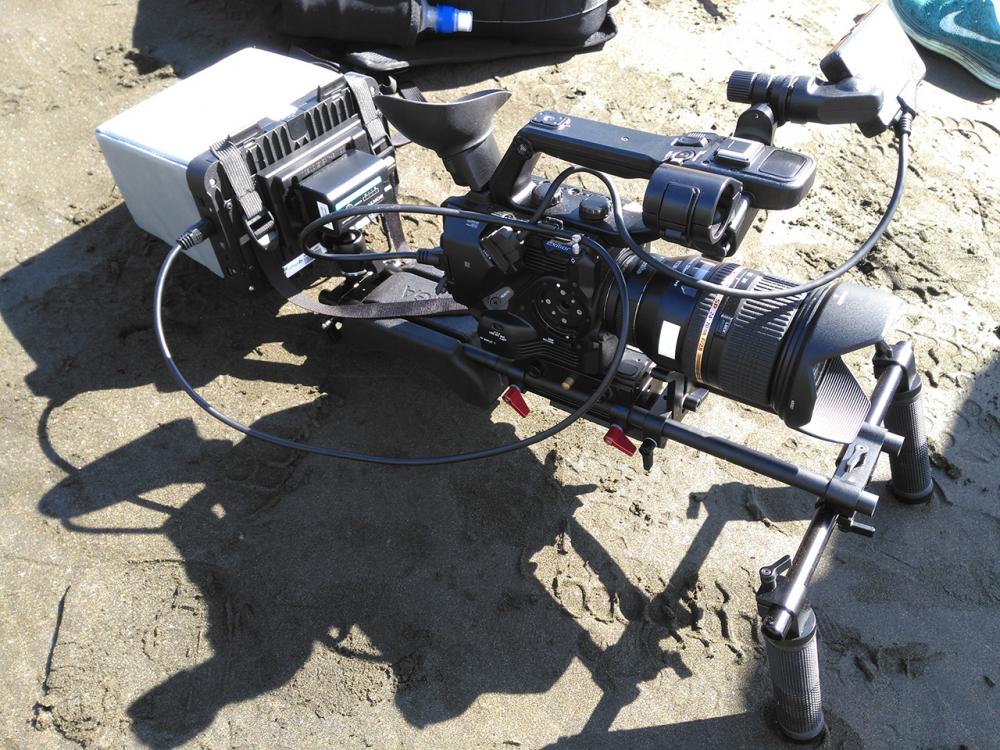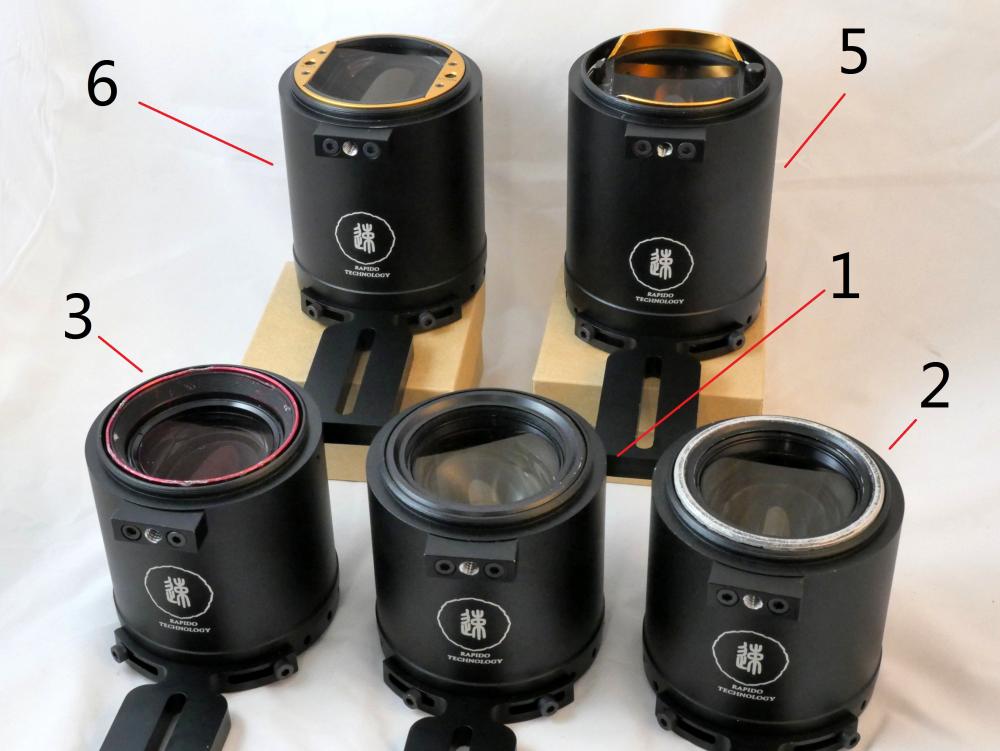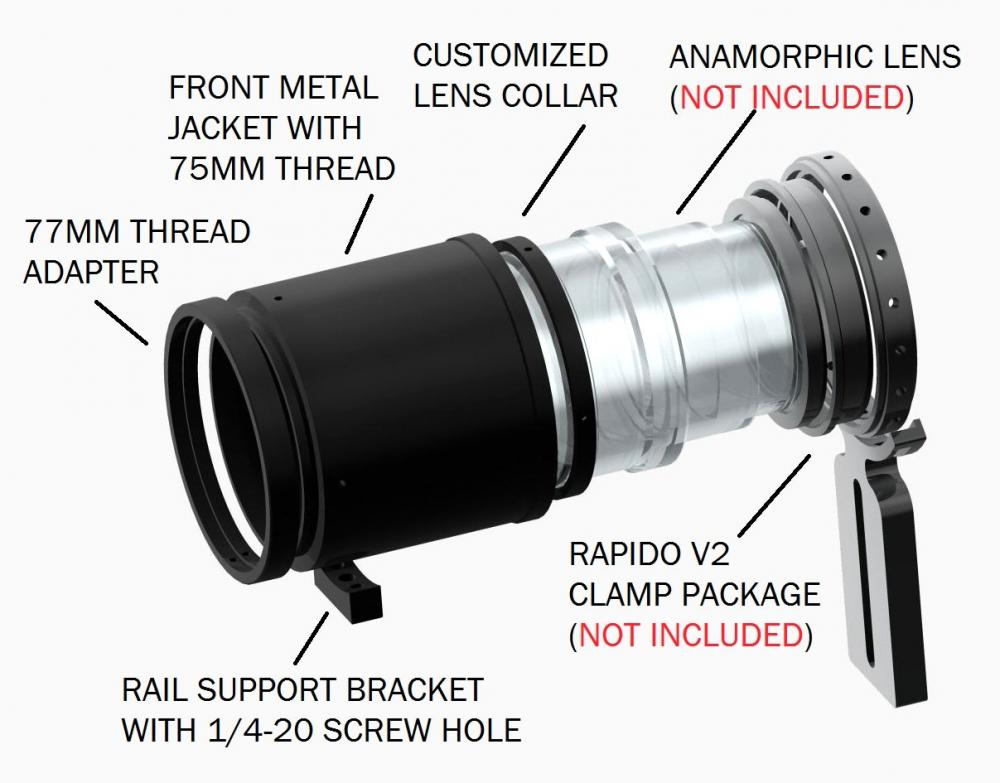Leaderboard
Popular Content
Showing content with the highest reputation on 07/02/2017 in all areas
-
Its the close season so I won't be in a stadium for a couple of weeks yet to do an exact test but I'll offer you this in the meantime which I've just done. This is a picture of my Philips Hue LED strip light in my kitchen taken with a Fuji X-T2 One of these images is shot with the electronic shutter and the other one is shot with the mechanical shutter. For a bit of actual real world perspective on this camera threatening scenario, also here are a random collection of shots I've taken with the X-T2 at a football stadium with LED boards around the pitch. If you point any camera with an electronic shutter at an LED light source its likely to have more bands than a music festival. The fact that you can clearly see it in the EVF while you are taking the shot should alert you to the fact that you need to switch to mechanical. Did I shoot those football images on electronic shutter? Nope. Not a fair test then? It is because its do with where these boards will actually be and hence an indicator of the real world potential of this issue.. They're not exactly on top of anyone and being the only source of illumination. But there is a much bigger reason why its a fair test of real world use of a camera with electronic shutter for sports. The reason for that is in the third picture. If you are tracking action at 1/4000th shooting at 15fps the rolling shutter is horrendous with an electronic shutter. Its a far bigger problem. And a very, very real one. Because it will be affecting far more than 2% of your shots and thats why you just wouldn't shoot with an electronic shutter in the first place. Anyway, here is an article from Richard Butler on DPReview explaining why you should use mechanical and not electronic shutter when shooting at high shutter speeds with artificial light. It was six weeks ago though so, hey, maybe the rest of the camera industry has made some massive leap in the meantime meaning only Sony have a problem now.... Otherwise why would it be such a shock horror revelation when you've already wrote a piece about it being 'a thing' ? https://***URL removed***/articles/5816661591/electronic-shutter-rolling-shutter-and-flash-what-you-need-to-know/23 points
-

DPReview moan about Sony A9 banding with 7700hz LED advertising
Timotheus and 2 others reacted to Andrew Reid for a topic
For those that don't see it, it's on me to explain it better: DPR run sponsored content and advertorial, which is often thinly disguised by appearance aside from the tags lost at the bottom of the page DPR are paid by Canon for the sponsored content DPR are owned by Amazon, with the end goal to sell more cameras Some people may not mind this or even see the implications but you have to appreciate that when you take money from someone you are beholden to them in terms of maintaining a good relationship. It's really that simple. In order to maintain the good relationship and carry on going to the PR events for new camera releases, the unspoken rule is - Don't criticise too heavily (6D Mark II) Favour the manufacturer who is paying the most Answer to Amazon, after all they are the owners and expect results There are two issues here, maybe some confusion as to how they relate. Let's look at the 6D Mark II coverage on DPReview first. For nearly every other site and blogger (including myself) the lack of 4K was big news. This camera warrants strong criticism for lacking good video and the crowds agree - see the massive Reddit thread, forum reactions, Kai's video even and ironically Jared's video for clicks. They all criticise it for the lack of 4K. DPR ducked it. There is some tiny line about it and it's glossed over, but it warranted an entire article on the lack of 4K and the soft 1080p and moire. Why? Because at least 1/3rd of the potential customer base for this camera is expecting it to shoot very good video. Some may not care. So what? That's a moot point. The crux of it is, DPR's editor is trying to maintain the close relationship with Canon's PR team, to keep the sponsored content onboard. So the criticism is watered down compared to EOSHD and others. This isn't hard to understand. And now to the crux of what I am saying about the A9... Did the A9 warrant a front page sticky post about banding? A big long post warning sports shooters to be careful of the electronic shutter? Yes it did. But the 6D Mark II warranted one about the shit video mode, and only the A9 got it in the neck. And that to me is deeply suspicious. Then there is a separate issue with the A9 coverage and that it is the research is flawed clickbait and blown way out of proportion. The problem with Jared's clickbate in the first place is that he only tested the electronic shutter at the football match and not the mechanical one. Any talented pro would have immediately changed the settings at the first sight of banding and had the technical knowledge to understand what was going on immediately. Had he done so he'd have got a different result and I for one would be interested to see if it fixed the problem, which would have made for an entirely different kind of article and video. Instead we are none-the-wiser. How is this useful? The only take-away we have from the article on DPR is that the A9 has a serious banding problem. ... and that sports shooters who are the main target audience for the Sony camera should think very carefully about not buying it. This is absolutely disastrous PR for Sony and a real trophy piece for Canon in persuading sports shooters, their key pro customer, to stay with the 1D X range and L lenses. Sony's engineers and innovative technology does not deserve this kind of publicity. Electronic shutters are the future and have huge benefits. Sony should be rewarded for innovating. Instead they are scolded for it and Canon get of the hook completely free for having a lazy, un-innovative product that doesn't even try. No electronic shutter. No 20fps. No 4K. No 5 axis stabilisation. No EVF. And it doesn't end here... The two most-read A9 pieces on DPR in the past 2 months have been about why the main target audience for the camera should think twice about buying it instead of a Canon. What's worse is both were flawed pieces of writing and research. The article about a Canon pro making a hypothetical switch was pure tosh. They priced all the Canon gear way too low on the used market and then claimed it would cost 10's of thousands of dollars for pros to sell-up and switch lenses, even though all pros are different and not all of them need to suddenly replace $30,000 worth of telephoto lenses in order to pick up an A9. The article was out of touch because for many pros, making the switch is as simple as buying a few lenses and the body, or using their existing Canon lenses, depending on their line of work. And the article didn't even apply to enthusiasts... it completely forgot about them and again the main take-away from this pro-Canon propaganda was... --- So when, dear DPR, is Canon going to get it in the neck in the same way? I'm not fucking holding my breath! You all saw the Canon Rumors poll which is in no way a video-orientated site and very much full to the brim of photographers... Nearly 40% of these photographers said they wanted 4K video. So if you look at the narrative at DPR it is out of step with the people... They're not addressing the negative side of Canon's products in the way that I and others expect them to do as reviewers. When I tried to do it in my 5D Mark III review, it was the beginning of the end for me as a writer at DPReview... I know it first hand! I've had account managers from retailers come up to me out of the blue at trade shows saying, we agree 100% with what you write about Canon, but in no way can give you an affiliate account because Canon are one of our biggest manufacturer accounts. With all due respect to Mattias (and I have a ton), You're not the one who has been forced out of DPReview by Barney who find my truth-bearing a bit inconvenient. I know what I am talking about here and it's rude to suggest I don't. So please bear with me... and try to appreciate the wider picture. It is not just about one article. The least Jared can do is be more balanced and creative.... It's obvious that a 7700hz refresh rate light source interferes with a rolling shutter. 7700HZ!! So give us a fucking solution! There was one right in front of him on the A9 and he chose to ignore it! Don't dress it up for clicks and make a big attention grabbing headline out if it as if to paint the A9 as broken for all intents and purposes. Otherwise the manufacturers won't bother innovating and everything new they introduce will be as conservative as possible so to avoid sales-killing problems like this. Also let's see DPR readdress the balance to... 1. Test the damned mechanical shutter. Take Jared and his A9 back to that stadium and get him to do what any pro worth their salt does on encountering a problem... Use an alternative method available right in front of you! It's not hard! 2. Tell us how the mechanical and electronic shutter compare with regards to the banding so we can see how the solution stacks up! 3. Test head to head vs the Canon and Nikon pro DSLR cameras and see if they have banding too. Some pros claim they do. So let's see it! 4. Give Sony some fucking credit for being innovative... 20fps!! 4K! Then when it comes to the 6D Mark II which underperforms by 5 years with regards to video, THAT is when the headline is warranted. That is a proper fucking headline. This effects each and every single person who will buy the camera, not just the ones who happen to use it at a sports ground with 7700hz ad boards without realising that maybe they should avoid using the electronic shutter! DUH!3 points -
3 points
-

Swapping the FS5 for a........ GH5?
hansel and 2 others reacted to Andrew Reid for a topic
I'd definitely sell the FS5. The question is what's best to replace it with... GH5, E-M1 II, 1D C and A99 II would all be contenders if it were me choosing! These are creative cameras that get out of the way. The stabilisation is wonderful to have on the GH5 and E-M1 II. The E-M1 II is even smaller than the GH5... Ergonomically if you didn't like the RX10 III you might not like the 'feel' of the GH5's body, which is where the E-M1 II comes in. The 1D C shoots very decent 1080p, remember... so although the 4K image is clearly better than the FS5 and pretty much everything else, the file sizes can be a hassle unless you don't mind length transcoding sessions and having 10 or 12 CF cards on a shoot. The A99 II for me is a superb all-rounder which does everything well, especially slow-mo.3 points -

Canon - the REAL technical and political reasons behind the lack of decent video
deezid and one other reacted to Andrew Reid for a topic
Don't start dragging this one off topic as well. My opinion of the 80D is irrelevant beyond the fact it shoots really quite terrible 1080. The ergonomics are good and Dual Pixel AF is great, which makes it all the more a shame that the stuff I am talking about in the article applies to this camera 100%.2 points -
Shrug, this is a hobby for me, VERY expen$ive one too! Luckily? I have a good paying job. Unfortunately, it is full time, and VERY demanding/stressful, sigh... Doesn't leave much time for important stuff, like family, hobbies, etc... How I wish I could do this fulltime, it would be super great.2 points
-
I'm not sure about the other things you're asking about, but I was talking to the guys behind the Leeming LUT (http://www.leeminglutone.com/) about these settings. Here's what they said: "Highlight shadow should stay at 0. Setting them otherwise actually causes artifacts and isn't recommended." Also, before we could get Cine-D on the GX80, they said this, so I assume now we have Cine-D, it's even more reliable: "The GH5 Cine-D LUT will work on your GX80 without issue. Use the same setup guide as the GH5 as much as possible and you'll be golden. Just change sharpness to the value you like, or -3 as a default." Also going by their info, you should ETTR, get the histogram heavy on the right, without clipping. Check it out on their website http://www.leeminglutone.com/.2 points
-
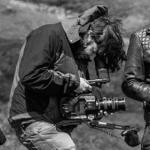
Swapping the FS5 for a........ GH5?
webrunner5 and one other reacted to Oliver Daniel for a topic
Yep, I figured that (this forum being mostly mirrorless and DSLR users). I've not completely conceded that the FS5 is on it's way out. It's something that I'd take very seriously and patiently. I'm editing an FS5 / A6500 music video right now - the A6500 image stands proud with the high bitrate 4k FS5 footage - however the 4k 100fps from the Inferno is indeed excellent and unique at the moment. Trouble is...I'm not enjoying my shooting with the FS5, but I do smile when I use the A6500. I've got a friend with a GH5 and we're going to do a camera swap for a couple of shoots. See what tickles. p.s I do agree that the EVA1 sounds much better, but then we're due an FS5 II soon.... (it goes on and on and on and on)....2 points -
Swapping the FS5 for a........ GH5?
jonpais and one other reacted to Fritz Pierre for a topic
@Jonesy Jones's camera options seems perfect to me...looked at the EV1 first, but for lenses I've collected the EF mount is dead....love the GH5...first IBIS camera I owned...seems unreal, that before one shot without it...the UMP is also an attractive option down the road...beautiful image...cuts well with the GH5 and flexible mounts at a very reasonable price....for small and nimble though, the GH5 IMO is just rock solid...and it does not produce moire and rolling shutter is excellent...very happy with mine...and as you shoot professionally, it's a very good choice...the ways you can customize it to suit your style/needs (something rarely mentioned but very pertinent) is amazing....lastly...I would use this alongside a Varicam without any hesitation to get difficult shots.2 points -

Canon 6d mark 2 it´s official
gelaxstudio and one other reacted to IronFilm for a topic
Exactly. I wish more people would realise this. Heck, the 50D was capable of video and even had a microphone designed in it for video. But Canon didn't go ahead with it. Was only the Nikon D90 which finally *forced* Canon to add video to their next DSLRs. Perhaps now the D500 & D7500 (& the next D5x00 update?? & the D750 mk2? Plus of course the D900 will have 4K) has got 4K, then that will finally force Canon to bring out 4K to their future camera releases. Once again, it is Nikon (not Canon) who is leading the slow push forward with DSLR innovations.2 points -

Actually you can make the GH5 look very cinematic!
iamoui and one other reacted to Tim Sewell for a topic
I've always been a little unsure about this never-ending desire to see detail in shadows. I mean - sometimes, if there's something in those shadows that you particularly want or need to see then - yeah - I get it. On those occasions you need to expose (or light if you're able) to reveal it. But most of the time I just can't se the point. Film, video, photography - even used journalistically they're not reality, where you can see into shadows with your human eyes; they're a stylised representation of reality where you, as the artist, get to use light and dark to convey a 3d scene into 2d, to model and sculpt, to draw attention and imply emotion. Seeing into a shadow is important for a sensor demo but for art - especially narrative art - it seems a particularly silly aspect of the whole to get uptight about. FWIW I think the OP's teaser is a compelling and beautiful piece of art. His placement of black tones on the response curve is immaterial to that.2 points -
Actually you can make the GH5 look very cinematic!
Cas1 and one other reacted to Mattias Burling for a topic
I think you need to reread my post without a pair of defensive glasses on. I have not pigeon-holed anybody nor anything else that makes me look silly. I just added a couple of thoughts to what could be a meaningful discussion about the problem all people that hang out here, including nerds like myself, face. We risk the chance to be "home blind" and forget about the real people out there, you know the audience, the non nerds... They are at the end of the day our bosses. What they like goes. But to answer your questions, yes they do, its starting to drift a little. But that's normal with any trend. If we look at the last 20 years so what you call "heavy-handed grading, blurry images, harsh lighting and distracting out of focus backgrounds" have been considered "professional" looking. That's merely because the real non nerd people haven't been able to get those looks with their own equipment. Its been unobtainable and different = professional an likable. When they hire someone to shoot video they want something different than what they can get them self. Before it was easy. Just use a tripod and good audio and you kicked their ass. Today the world is different. Everyone and their cat has a tripod or stabilized lens. A large sensor and a decent mic. So today we must once again look at what we can offer to our clients and audience. But there are of course a few things that never go out of style. Story, good music, great acting, good exposure and to some degree contrast. People seem to enjoy contrast. But please note that I haven't even commented on the video at hand nor the response to it. I just commented that contrast isn't always a bad thing and shadows can be both crushed or not and still look good. Why do you think every new camera that's ever been mentioned on this forum gets a dedicated thread with people bashing the crushed shadows. Just to a make a new thread a few weeks later celebrating the shadow detail? Its not because Panasony doesn't know that "nerds" like raised shadows. Its because they know that the big chunk of non nerds out their like it their way. And they are more important.2 points -
Actually you can make the GH5 look very cinematic!
Rudolf and one other reacted to Bioskop.Inc for a topic
Remember when the trend was to leave Alexa footage all milky/washed out - it was like they used LOG, couldn't make a grading decision & so just left it (or that's how it seemed). And here we have someone who has actually put some contrast/colour into his images & people call foul - it's a real shame & a very boring position to take. Would hate to see the comments if these people ever watched an old Film Noir.... Yes, the OP is correct - this piece doesn't look like video. Really thought you'd nailed it with the shot when the woman is moving in front of the shops. The only comment would be that there is a slight colouring inconsistency between the wide & the close up shots with the opening dancing sequence (the close ups are slightly less contrasty, but not much).2 points -
So as I've hinted more than a few times in the other thread, the discovery of the Cinelike D and other bits and pieces for the GX80 etc was actually a bit of a happy accident while I was trying to do understand the Panasonic wifi stuff for something else. And here is that something else. Well at least a prototype of it but it is fully functioning and will just be finessed a bit more. Basically, its a wireless hardware remote for the G series cameras that operates over wifi and can currently control record start/stop, shutter speed as well as aperture and focus if you're using a native lens, including a single shot AF switch. For the non-Cinelike D cameras that can now be hacked to have Cinelike D there is also a dedicated button to toggle it on and off so you don't need to mess about with browsers and computers or smartphones anymore. Focus and aperture control are done on a joystick and everything else is switches. I'll be putting a layer switch on so that it can be toggled back and forth to a different control mode for ISO, WB and other stuff. As this is the prototype it is nowhere near the finished piece and it will be reduced in form factor to just be about the size of the control board. Power is by any USB source so there are billions of options. There is a lot more finessing and feature enhancement to go on with regard to the focus control (and yes, I know exactly what you'll all want it to do !) but the hard part is done now. It does support the display of the values on a screen and I'll be sorting some options out for that. The purpose of this gadget is primarily for use with a gimbal but it can also be really useful on a tripod bar for anyone shooting live event stuff. For cameras with inbuilt lenses I'm going to add a zoom mode on the joystick. A very quick very rough demo so you can see it in action. Any lag you might see between me operating the controller and the camera video is just a sync issue between me throwing the two recordings on very quickly1 point
-
This is developed for the people who like to build a definite professional looking anamorphic lens with Rectilux HardCoreDNA or SLRMagic Rangefinder. Customized engraving service is available, so you can put focal length & T stop engraving on the lens, like real cinema anamorphic lens does. Features: Exchangeable connection to Rectilux HardCoreDNA or SLRMagic Rangefinder Rail support bracket with ¼-20 screw mounting hole to use with SmallRig Quick Release Lens Support Build-in locking mechanism to prevent focus ring of the anamorphic lens from rotating Standard 82mm thread connection to Rapido V2 clamp Customized engraving service (with additional cost) Maintain minimum distance between variable diopters and anamorphic lens Supported anamorphic lens list: Kowa 8z/16H Kowa B&H ISCO Cinemascope Ultra-Star (Red) ISCO Cinemascope Ultra-Star 50 mm (Golden) Schneider Super Cinelux Anamorphic 2X MC Schneider ES Cinelux Anamorphic 2X MC For more information, check over here: http://www.rapidotechnology.com/products-services/rapido-front-metal-jacket1 point
-

DPReview moan about Sony A9 banding with 7700hz LED advertising
BTM_Pix reacted to Andrew Reid for a topic
Richard and Lars are great on the technical side at DPReview. Much respect! The rest of the team come across through their work as clickbait obsessed hipsters. Someone else I consider a friend, Mattias, is on a really negative anti-video path right now and I just hope you snap out of it. I just bought a Leica T for stills because of your YouTube channel. You're an inspiration and a huge talent. Why do you have to sour it by being devils advocate all the time? A handy test subject. I have the Hue LEDs as well and they are hell for banding. Very fast pulsing refresh rate to generate colour. So the fundamental tech is similar to the LED advertising boards. Exactly, you see the problem, and switch. That's why we need global shutter to come of age... taking ages! If on Richard had some input on the Jared-based article... It could have been a great lesson on when to shoot electronic, when to shoot mechanical, instead of a 'let's slam an innovative camera for clicks' piece. The only way Sony could have avoided the shock-horror coverage is to put a global shutter on there and it just isn't feasible in 2017 with the current expectations for low light performance, colour, battery economy and so on.1 point -

Actually you can make the GH5 look very cinematic!
jonpais reacted to hyalinejim for a topic
Just white balance the camera to your monitor's white, load up the image above on your monitor and defocus slightly. Frame the shot so the chart is 50% of the image area (avoids vignetting). Start at base ISO, and expose so that the black square is near black on the histogram. Go to the next ISO setting, adjust exposure accordingly, repeat, etc.. Then use these clips to build a noise profile for each ISO setting and save it permanently. This will give you a decent noise profile to use in the future where you there may not be anything uniform in frame for a given shot, or where you forgot to shoot a chart. I don't know if it's actually better than a chart or not. But it's free! I guess the guys at Neat Video picked those magenta and green squares for a reason. In my experience the ultimate way to use Neat Video to kill noise in low light situations is to hold a ColorChecker or similar in front of the lens at the beginning or end of each shot / lighting situation / change of camera settings. But it's not always entirely practical to do that.. or I forget!1 point -

Recommended c-mount lenses for Canon EOS M
samuel.cabral reacted to Andrew Reid for a topic
So it just dawned on me that you can ape the Digital Bolex raw look for £100 with an EOS M + Magic Lantern. Yes, it's an APS-C sensor, so you'd need to go to about 1536x518 for a 1.8x crop 16:9 to avoid vignetting on 25mm lens. GH2 was 1.8x crop and I've had Super 16mm stuff work fine on it. So has anyone actually tried a bunch of c-mount lenses on the EOS M and has any recommendations? Also for decent adapters? Arriflex S16 adapter also would be handy. And before anybody says "just get a Blackmagic pocket cinema camera", remember the EOS M is £100 used body only and does 18MP stills Way more fun!!1 point -
Its the calibration target Neatlab provide for creating the profiles. I don't use the app myself but have you tried using the ones created by users of the still version? https://ni.neatvideo.com/download/noise-profiles/cameras/panasonic1 point
-
I'm wondering too how to use that to create noise profiles. What advantages does it have over a regular color chart (which I've used on every camera)?1 point
-
I use the Focusrite Scarlett 2i2 and it's fine. I got it in the studio package with a microphone and some headphones (needed to do some quick voiceovers so ran to the nearest store). It also came with a free copy of Cubase, so if I ever wanted to get into music production, there's a good starting point. It's very small and the red's kinda stylish I guess haha. Both XLR ports are also 1/4" jack inputs, and it's nice to have that option.1 point
-

Actually you can make the GH5 look very cinematic!
jonpais reacted to hyalinejim for a topic
I use this:1 point -

Swapping the FS5 for a........ GH5?
jonpais reacted to Oliver Daniel for a topic
Yep, for those who haven't used the camera they only have current online footage to go from, and from what I've seen so far, 97% of it is of a very low standard (in all due respect) - which is expected really as many beginners will be trying it out. How is the HFR up to 180fps? This is a very important feature for me and the only reason I use Sony instead of other brands. The A6500 100fps is nice when sharpened, much better than the A7SII's cropped version. I know it won't beat the 4k 100fps from the Inferno, but curious to see how good it is. I can't trust "tests" we see on YT and Vimeo, hence my comment above.1 point -

Swapping the FS5 for a........ GH5?
Jn- reacted to Andrew Reid for a topic
Jimmy hasn't used a GH5, if he had he'd see that it had an image that is better than the Sonys, 10bit codec, much better colour, at least 12 stops dynamic range in V-LOG-L, far less compression, less macro blocking, clean shadows and it does have HFR 1080p all the way up to 180fps.1 point -
You're gonna get a bit of an echo chamber here, lots of people with new GH5s... and also lots of people who haven't used a bigger setup. From the style of work you make, I think you will miss having a truly top quality image in your main camera (raw, 13 stops dr, nice rolloff, HFR etc) I sold a combo of 5DIII (ML raw) and FS700/OQ7 setup to move to NX1 and A7s ii... regretted it massively. At the end of the day, IQ is what really counts and I traded that for mobility and specs. I have now sold it all up and gone back to a 5Diiii. You already have some great cameras for the mobility stuff, why not just use them on the shoots that you feel you would benefit from mobility, but have an F5S, C200 or whatever for the shoots that need a higher level of IQ. I did used to hate tethering the OQ7 to the FS700 though. C200 or the new panny look far more interesting, small but with internal cinema quality IQ.1 point
-

How do you afford your gear?
Santiago de la Rosa reacted to Oliver Daniel for a topic
Sometimes it seems like other filmmakers online have an infinite pot of money to freely buy whatever bit of gear they want, when they please. Because of social media, we are bombarded with the "new toy" posts daily, so it gives this exaggerated impression that you're being left behind on the tech trail. The Philip Blooms of this world do purchase every camera, lens and innovative new product ever made, but that's because he's got sponsors, and his business model needs him to stay very current with this week's hottest gadget. He knows exactly what he's doing. Andrew runs a blog, has a clear passion and has a very clever way of making his dosh for new gizmos. Probably. Myself? I'm like the rest of you. I have to work bloody hard to get anything new. The video industry is massively competitive in the UK. Gets harder as each week passes. That's just the way it is.1 point -
1080 vs. 4K: What is REALLY necessary?
jonpais reacted to HockeyFan12 for a topic
1) The 5k iMac is a great machine. Perfect for 4k editorial. I still don't see the advantage of 4k tvs unless you stand three feet from them (not for me), have better than 20/15 vision, or spend so much money that you're also getting the benefits of other technologies too (4k OLED? yes please... but if not, 1080p kuro plasma). Past a certain size (maybe 100" or so, mostly for projectors) they will have an appreciable advantage in terms of resolution, but below that not really unless you stand close. For monitors and smart phones (very close to the face) then the retina advantage is huge, though, imo. For web deliverables 4k makes sense to me if you can handle it in post. 2) Depends on your workflow. I transcode everything to ProRes or DPX so for me it would be a huge problem for me. You can always switch to 1080p for less important content, though, or if you're editing in Premiere just use the native codec.1 point -

How do you afford your gear?
Justin Bacle reacted to IronFilm for a topic
Heh, even easier in New Zealand, don't need to fill out any forms like that! Just go out and do.1 point -

Max bitrates and does the NX1 hack actually reduce macro blocking?
Francesco Tasselli reacted to lucabutera for a topic
Hi Andrew Reid@, I use the Sandisk Extreme Pro 280MB/s, I shoot 180Mbit/s with audio and 200Mbit/s without audio in 4k 24fps - FHD 50fps - FHD 100fps. In my experience the best setting for kill the macro blocking is 4k DC 24fps, DR profile, Pro mode, 16-235, master black -10. I use the NX/KS hack and third part lenses. Best1 point -

In memoriam
webrunner5 reacted to Emanuel for a topic
Three years ago, Uwe Steinmueller... Had no idea, this time, the young Eskild Fors, some weeks ago. Distinct stories of life, but both wrote their pages in our lives as two talented digital contributors, unfortunately lost nowadays. My modest homage. https://www.google.com/search?q=Uwe+Steinmueller https://www.google.com/search?q=Eskild+Fors1 point -
Magic Lantern Raw Video
BrorSvensson reacted to tweak for a topic
It has a slow write speed, so anything in decent resolutions will never be continuous. It's possible you could do 48fps for a short time until the buffer fills, but I think it will also be squished if it is possible, so you will have to resize in post (like anamorphic lens). Likely as well that the Liveview will not display correctly.1 point -

DPReview moan about Sony A9 banding with 7700hz LED advertising
leeys reacted to Andrew Reid for a topic
Let's see how many people he defrauds out of their money on DPReview before they do something about it.1 point -

DPReview moan about Sony A9 banding with 7700hz LED advertising
leeys reacted to Oliver Daniel for a topic
Wow, stinging article. Sadly the money wagon does take over in every genre of publication ever. It's great that EOSHD is still impartial, brutal, sometimes funny, insightful and on a few occasions, off the rails! But I like that. It's genuine and human. I cant give an opinion on DPReview, I've barely read it as I find the site design frustrating. Oh, and Ebrahim is a video genius, obviously. His knowledge is the greatest thing on Earth1 point -

Canon 6d mark 2 it´s official
IronFilm reacted to Oliver Daniel for a topic
I think it's very hard to judge the image quality of the GH5 going off the user videos on Youtube and Vimeo. The majority of footage is exceptionally poor, and this is down to bad exposure, poor lighting, missed focus, crap compositions and pretty awful grading. It's understandable as I guess many beginners have picked up the camera and are giving it a go. With the GH2, it's more "seasoned" and therefore has a history of better skilled hands on the camera. I don't think there's any excuse for the 6D II video quality - other than the fact Canon certainly and absolutely want video shooters using their C-series cameras. I think everyone has to finally concede that Canon will never be a serious option for DSLR video anymore. Never.1 point -
Well you just like soft images. Nothing wrong with that. How much do you like this one ?1 point
-

Samsung NX Speed Booster
Francesco Tasselli reacted to Andrew Reid for a topic
That shot is 3:2 or 4:3... In video mode 16:9 those dark corners will be gone, no?1 point -
Actually you can make the GH5 look very cinematic!
graphicnatured reacted to mercer for a topic
Man it was difficult finding some examples and these are the closest I could come across. It's crazy the amount of looks that they used this season. Honestly, you're a better colorist than me, so you'd probably know better if it is obtainable with a GH5. I think @AaronChicago made a LUT for the GH5 emulating one of the various looks from this season of Fargo, so he'd probably know better than me. Are you thinking of taking the GH5 plunge? Now I just like this shot and color...1 point -
Not even, Canon will only release proper 4k (ie not 1.74 crop..) when all the industry will be at 8k60, then we will have 4k24p with moire on Canon DSLR. - New sensor, That the least they can do on a new $2k camera. Nice that they haven't used the one from the original 6D... - Digic 7 and extended ISO range: what does it bring in real life ? Faster processor and then old UHS-1. What is the real usable ISO ? Max ISO doesn't really matter 32 000 what not usable on the 6D anyway - DPAF: again what's the point ? This is mainly a video feature and video quality is going to be poor - 45 cross type AF: yeah that's nice actually but the original 6D was very bad on AF - Touch screen and Swivel: nice but nothing revolutionary here neither. It's on many entry level camera - Weather resistant: yes good point - Wifi, NFC, bluetooth, GPS: the wifi and GPS are already on the first 6D, a bluetooth and NFC chip is not very ground breaking, they cost a few dollars and many devices have that nowadays. Actually that would be more important to develop a real ecosytems around that because the current Canon App isn't exactly great. Hopefully the Wifi connection will be easier to setup on the mk2 because that's a huge un-user friendly mess on the 6Dmk1 (the GH5 app is even worst to be fair). Sure the 6Dmk2 will be an ok camera but 5 years and $2000 for that ? The D750 come very close or better (dual slot) and was released 3 years ago. It's available at almost half the price brand new on ebay. Personally I love my 6D but I can't justify $2k for the mk2.1 point
-
Pro camcorders? They're pointless creatively.
TheRenaissanceMan reacted to SimsP for a topic
Well part of all of this is true and part of it isn't. In the beginning everyone should answer one simple question: What do I want to get? Do I want to use the footage just the way it comes out of the camera and put it on youtube? No grading or colorcorrection. Well why buying a GH5? Save the money and get a cheap DSLM or maybe even your smartphone will do the job. If my demand for quality is a little higher and I want to grade my video a little bit, but I don't need my camera for paid jobs maybe a a6500 is a good choice. For paid jobs a GH5 is probably a better choice as it is a little more versatile. And that's it basically. For youtube or even television you really don't need better cameras. But things start to change when it comes to high quality Hollywood class video, especially concerning the recent approach of HDR for video. I've been playing with the new possibilities that you have with this huge dynamic range for almost half a year now and the one thing I have learned really quickly is: NEVER USE 8 BIT!! Although for SDR video with roughly 6.5 stops dynamic range 8 bit quantization still creates pretty decent quality, for HDR it is a huge pain and limits your grading possibilities drastically, especially when combined with an end-user codec like avc or hevc. That's why recently I've been starting to use an external recorder for my NX1 which doesn't help me with the 8 bit problem, but recording Prores helps preventing lots of blocking artifacts. Actually the 10bit output is right now the one thing I envy all the Panasonic GH4/GH5 owners for. So what kind of cameras are well suited for HDR video. Well first of course your sensor has to have a high dynamic range and this is where expensive cameras are still almost undefeated but also the cheaper cameras like A7s have a great sensor concerning dynamic range. GH5, NX1 and so on deliver quite decent dynamic range, but actually you can tell the difference to more expensive sensors in post. The next important thing is quantization and this is where all the cheaper Sony cameras as well as NX1 and Canon cameras really suck. 8 bit is definitely not enough for HDR and you will get a whole lot of banding if you're not very careful. In post I very often use a grain overlay on my NX1 footage to dither the banding a little bit and it helps, but it's far from perfect. So when considering HDR 10bit recording is absolutly minimum. Better use 12bit or 14bit if possible. The final really important thing is the way you store the data. Here the Blackmagic cameras clearly have a huge advantage because of their RAW capabilities and my BMMCC has served me very well during the last couple of months. Using RAW you can make the most out of the sensors dynamic range. Prores or DnxHR also do a quite good job but you will most of the time lose at least half a stop and this is something you definitely do not want for producing HDR content. So whenever you can afford the datasize SHOOT RAW and NEVER EVER use AVC or HEVC they will betray you. Actually this leaves not many cheap cameras in the pool. The only cheaper cams for RAW are the Blackmagic ones and the next would be FS7 price tag and beyond ARRI/RED. If I had to choose a camera for a professional grade HDR production never mind whether for youtube, TV or cinema, the cheapest A cam I would go with would be a Blackmagic 4.6K and maybe a BMPCC/BMMC or perhaps GH5 as B or action cam. Every other camera below has too many limitations in one way or another and obtaining good HDR footage will be very frustrating. But the price is worth the effort. HDR with its huge dynamic range allows for a whole lot more creativity, when it comes to playing with lights, shadows and colours. In my opinion HDR is the one big thing during the next years, that will allow us to be even more creative in pictorial design than ever before and hopfully it won't follow 3D down the stream. So, as mentioned before, the question always is: What do you want to get? For common youtube quality you don't need a camera for 1k+ bucks. But if video quality is substantial to you, especially when you're considering HDR video, the range of small affordable cameras becomes smaller and smaller. Thus if you don't want to buy a new camera every other year - choose wisely. And maybe Blackmagic has something new for us in their pipeline for the not so distant future. Kudos to them for democratizing video world like never before!1 point -
With regard to audio, I think the innovation has largely come from the music side of the fence rather than the broadcast/film side to be honest. From that point of view, there have been numerous 5DMKii moments. The Portastudio was one, the LinnDrum was another, the Akai S900 sampler, the Atari ST with Cubase, the ADAT digital multitrack, the Yamaha 02R mixing console and of course SoundTools as it was and ProTools as it became. Arguably, these were all much bigger game changers than the 5DMKii, particularly the latter ones as they changed the entire industry at the high end as well as the low. The 5DMKii let you make images that looked somewhat like the movie studios could do, the audio products didn’t just allow you to produce audio that sounded like a real recording studio did but actually became the real recording studios. The nature of broadcast and film is intrinsically more conservative. I’ve been involved in product development for one company where it seemed inconceivable why the BBC, for example, would spend five times more for something that did less and then for another company where it seemed inconceivable to me why they would spend five times more on what we were proposing to them than they could on something similar they could get from a music store. Some days you’re the statue, some days you’re the pigeon ! The problem with audio developments for music is that it plateaued and then became a race to the bottom price wise from which it will never return. It means that the innovation is now in the cost reduction and arguably why not because there really isn’t many more places for it to go in terms of functionality or quality. Which is good for us! As all of this rapid development was going on in music technology, say between 1982-2000, it was like the wild west at times with companies coming from nowhere with bombshell products that either drove their competitors out of business or drove them on to greater heights. And the vast majority of these companies were small ones (generally created by musicians who had to invent what it was the market didn’t have for them to buy), which made them lean and agile. Over time though, the eating each other’s lunch routines often combined with little, no or reckless business practices (and ESPECIALLY poor cash flow from over ambitious product developments) left them vulnerable to being put out of business or, more usually, being bought out by the major manufacturers who were predominantly large Japanese companies. The likes of Oberheim (Yamaha), Linn (Akai), PPG (Korg) and Sequential Circuits (Yamaha again) all went that way and the innovation generally went no further for them once they were under the wing of those bigger manufacturers. Eventually freed from their ‘consultancy’ deals, most have resurfaced as boutique operations serving an ever more niche market. If I look at someone like Fairlight and my relationship with them as an example of what happened to an innovative company, its quite informative. I went from being an awestruck kid when they brought the CMI out, to then working for a manufacturer who basically drove them out of the sampler business they’d created, to eventually working on OEM development with them when they transitioned to broadcast. In the subsequent 20 years they’ve changed hands countless times and are now just a tab on a piece of free(ish) software. Its hard to grasp such a transition for me but for anyone who’s too young to know what the CMI was, its the equivalent of RED’s RAW pipeline ending up as a free download in the Sony PlayMemories store for your RX100. Lexicon are exactly the same. From making jaw dropping almost other worldly products to being gobbled up by a company that was making most of its money off providing car stereos for GM etc and Lexicon was reduced over time to being included in every low end mixing console and software bundle that it could be licensed to. The company that bought them has done the same to every company its bought and I can’t even dignify them by mentioning their name even 20 years after them destroying the company I worked for ! So there’s just no incentive there for anyone to be innovative in music audio anymore as its littered with similar stories and the ones left standing wouldn’t see the amount of volume in broadcast/film that they need to press the button on the mass production runs they now need due to how cheap everything has to be now. The company that COULD do it are the much maligned Behringer. If you look at something like the X Air XR12 digital mixing console and see what they can knock out for £239 retail (inc VAT!!) then it doesn’t take a genius to see what they could do against Sound Devices if they had the inclination but there just isn’t the market there. Because, believe me, they wouldn’t have blinked if there was. So, unfortunately, I don’t think we’re going to get that 5DMarkii moment and the innovation such as it is will come from individuals themselves looking at products from the music side of the fence and modifying it themselves. Like getting that X Air XR12 and powering it from Sony NP batteries to make an extremely capable digital field mixer and recorder for £269 (including the £30 for the bits to do it) or being a smartarse and using cheap midi controllers to create remote focus and control systems for Panasonic cameras for under £75 (ahem!). Because music audio had its numerous 5DMKii moments a few years ago there is a backlog of a ton of cheap stuff that flies under the radar for film makers that is waiting for them if they look for it.1 point
-

Samsung NX Speed Booster
Francesco Tasselli reacted to lucabutera for a topic
I am very honored by Andrew's review. Some fast Aps-c lenses could work on NX-L without vignetting. I think the Sigma 30mm 1.4 Art lens could work fine, getting a nearly 35mm 1.4! But I did not test it.1 point -
The choice of "crushed" shadows (not really crushed, check waveform, but strong compression and pulled down to 0-3 IRE range) was an artistic one to achieve a very vibrant, dark and colorful look. I honestly would love to work with a Varicam LT instead, or a GH5 with the Varicam sensor and processing, lol... A bigger camera would limit me in many situations, but would be a great option for a way bigger budget (with assistance, another operator etc...). 3 times better wouldn't be the case, some images would profit (way better color science, better DR, better lowlight, no noisereduction nor sharpening etc...) others would be worse (this camera is just big and heavy and would therefore limit my work I guess). I didn't have any worries about doing extreme colorgrading on the internal 10 bit GH5 footage, grades like butter without introducing any artifacts. The codec is just great and miles better than my GH4/V-Log experience tbh.1 point
-
Might I say that this doesn't just apply to cameras, but lighting and rigging as well. For the love of god, please please give me more products like the apurture 300d. No more generators or 800lb lights that risk burning down the city. Small, portable, and powerful.1 point
-
BMMSC is pretty awesome especially for the size. Is this creative, probably not, it was just to demonstrate what is possible with such a small camera, it is operating the camera system with one hand and driving with other1 point
-

How do you afford your gear?
IronFilm reacted to HelsinkiZim for a topic
In Finland it is quite difficult to start a business regulation-wise. They require a lot of upfront payments tax-wise, and you get cut off from any social benefits whatsoever. I find this worrisome when I am looking for staff as they usually prefer to not work, rather than work for random gigs. Another discussion for another forum... However, I used to just borrow or rent cams in the UK and US on weekends and save up for gear from the net profits from weddings and events. Here in Finland, I went through a government funded process the lasted 2 years, where you take daily classes in Finnish and attend business advisory meetings. If you are successful in applying for business support (i.e. have a good business plan, education and experience in the industry) they give you a grant of around 10 000 which they pay you every month in installments over a 6 month period. Its called 'starttiraha' for Finnish folk interested. Literally translates to 'start-up money'. I took out a loan based on this fixed future income, and will break even sometime this summer based on equipment and living expenses. However, I would have preferred to have had a more fluid entry as it would have allowed me to test camera systems. But I needed a quick start, and have sold off most of my purchases that were surplus (silly) and have reinvested in one system. Regardless of the grant, I still would have taken an unsecured loan - but only because I have done this business for over 10 years and am comfortable with sales, IM and SEO. I also do not know how to do anything else. If your quote is too high, I am the asshole around the corner with a better deal. Not fancy, but I don't have time for pleasantries - and I deliver (for corporate and events) because I have nothing to lose. Fingers crossed things keep rolling along... Edit: and the last time I spent more than 30 euros on myself for anything other than camera gear and support was sometime last year. I buy second hand clothes and rock a Huwei P9. I bought that phone only because it has a classy camera for instagram BTS - otherwise I would still be flip-phone. 30 euros was for small bottle of Paco Rabanne cologne. Even that I felt guilty about. Go figure. All net profit nowadays goes to wifey and the bambinos!1 point -

How do you afford your gear?
TheRenaissanceMan reacted to AaronChicago for a topic
I edited this Mummy trailer:1 point -

How do you afford your gear?
buggz reacted to Zak Forsman for a topic
full time freelance editor here. I bounce around at a couple different companies whose clients are the major studios. for example, I cut this piece for the mummy. the pay is great, frankly. i have been doing this sort of work for about ten years. I have also directed two features. the most recent was distributed internationally by paramount three years ago and we're still seeing good money from it. I don't spend more than I can afford on cameras and lenses, but am fortunate to be in a pretty good financial situation. No debt at all. My wife and I do not have kids. She also happens to be a film editor so she has an appreciation for my gear lust. But yeah, short version is that I work professionally editing and directing, and some of that income supports my personal collection of camera bodies, lenses, and support gear that i use more for fun, personal side projects that keep me sane.1 point -

Panasonic GH5 - all is revealed!
Cas1 reacted to Zak Forsman for a topic
Sure. For me, it's not just the wider field of view -- it's the compressed spatial and defocus qualities of relatively longer focal lengths married to a wider field of view that really revs my engine.1 point -

Two Things I've Learned - Shooting 16mm Glass on the Blackmagic MIcro
Lintelfilm reacted to AaronChicago for a topic
There is just something about that BM Super 16 sensor that is magical. I look back at stuff that I shot with the Pocket and think "Damn that was one of my favorite looking videos."1 point


